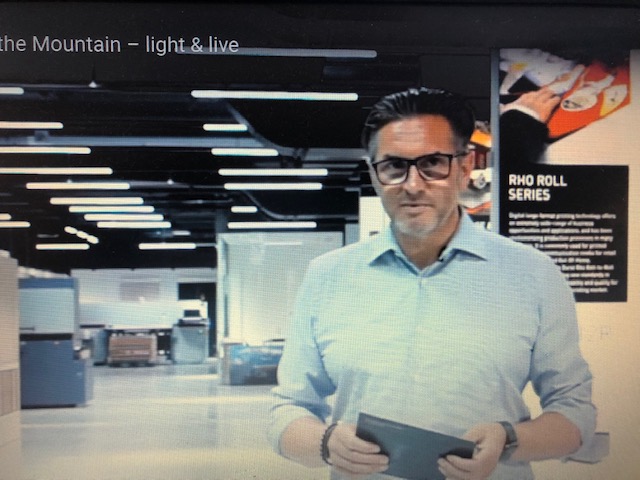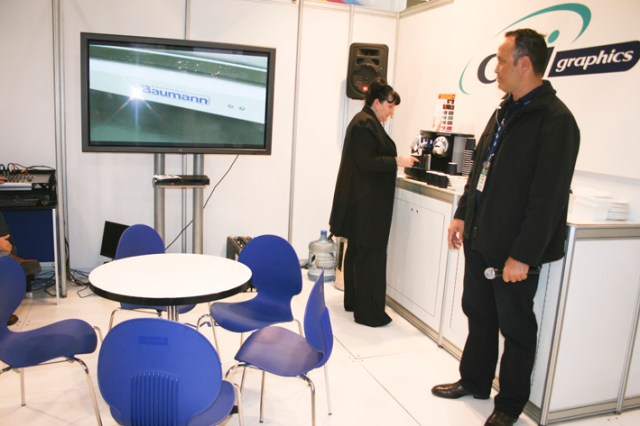
Durst has delivered an update via a TV broadcast from its customer experience centre in Brixen, Italy with the company’s CEO Christoph Gamper covering off the impacts of the coronavirus pandemic, particularly in the wide format space.
Italy was the first European country to be hit by the pandemic and the manufacturer of advanced digital printing technologies had to quickly make changes to ensure a continuous service to customers was upheld.
Staff worked from home and production was put on hold but was able to restart in late April and with the borders between Europe now open, the Customer Experience Centre is starting to receive more and more visitors.
In the meantime, Durst has launched a virtual ‘brochure room’ online which allows those interested in learning more about Durst technologies to walk through and explore the variety of options.
You can also view the Durst Live 2020 broadcast by clicking here.
Gamper said one of the key initiatives the company did was create a community safety mask for staff to wear but also to be used as an example of a business model that could be applied by most wide format printers using Durst Rhotex technologies during these difficult times.
“This is our Pixel to Output strategy in full play,” Gamper said in the TV broadcast.
“The masks are designed online in the front end to Smart Shop and are then handed over virtually to the Durst workflow to the printer and to the cutter as well.
“This business model can be adopted for many different products shows the strength of the software and the hardware working in perfect harmony together.”
Durst also surveyed over 1000 wide format customers at the height of the pandemic to gain an understanding of the market.
The survey found that during March and April many customers dropped production consistently by 80 per cent but many of these customers converted over to COVID-19 related products include PPE, safety signs and masks.
The survey also found the packaging segment was not effected by the lockdown.
Ink development is now one of the most important topics that Durst is looking at for the future.
The labels space is also continuing to strengthen for the company with its Tau 330 RSC which can handle between 1,000 and 3,000 square metres per hour and can economically print small, medium and long runs.
Helmuth Munter, segment manager for Durst’s labels and packaging division, said single pass UV inkjet printing technology has now established itself in the mainstream of digital printing and is gaining substantial market share.
Munter said the Tau 330 RSC has now over 100 installations worldwide in the past two years and provides a range of applications for label converters.
On top of the economic benefits, the press also allows for a broad range of applications.
“Besides the huge interest from traditional label converters, we are seeing an increasing interest also from large format customers and general print providers that are eager to expand their business into the label market,” Munter said.
Durst also pointed to some new technologies that it will launch at Fespa in Madrid in September, while touching on the latest developments of its joint venture with Koenig & Bauer.
Comment below to have your say on this story.
If you have a news story or tip-off, get in touch at editorial@sprinter.com.au.
Sign up to the Sprinter newsletter


